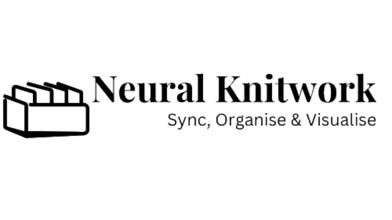The Best Way to Revisit and Use Your Old Notes Effectively
2/7/20253 min read


Last week, while clearing out my digital workspace, I stumbled upon notes from a conference I'd attended two years ago. As I read through them, I found insights that were more relevant to my current project than they had been when I first wrote them down. That's when it hit me – we're all sitting on gold mines of knowledge that we've forgotten about.
The Hidden Value in Your Note Archive
We've all been there. You take detailed notes during meetings, jot down brilliant ideas while reading, or capture insights during your daily work. Then what happens? These notes often sit dormant in our digital notebooks, gathering virtual dust. It's like having a library where all the books are locked away in a vault – valuable but unused.
Why We Struggle with Old Notes
During a recent chat with my colleague Sarah, she confessed that she never looks at her old notes because "finding anything useful feels like searching for a needle in a haystack." This isn't just Sarah's problem – it's a common challenge for knowledge workers everywhere.
The main obstacles we face include:
Overwhelming Volume
My personal note collection grew to over 2,000 entries before I developed a system to manage them. When you're facing that kind of volume, even thinking about reviewing old notes can feel daunting.
Poor Organisation
Remember that brilliant idea you wrote down six months ago? Was it in your work notebook, your personal journal, or that random notes app on your phone? Without proper organisation, valuable insights get lost in the shuffle.
Lack of Context
Reading old notes often feels like walking into a movie halfway through – you're missing crucial context that made those notes meaningful in the first place.
A Practical System for Note Revival
Through years of trial and error (and yes, plenty of forgotten notes), I've developed a system that actually works. Here's how you can implement it:
1. The Weekly Review Ritual
Pick a quiet time – I choose Sunday afternoons – to spend 30 minutes reviewing notes from the past week. During this review, I add tags, connect related ideas, and highlight key insights that deserve future attention.
2. The Monthly Deep Dive
Once a month, dedicate two hours to explore older notes. But here's the trick – don't try to review everything. Instead, focus on:
Notes related to your current projects
Random selections from different time periods
Tags that align with your present interests
3. The Context Layer
When revisiting old notes, always add:
Why this note matters now
How it connects to your current work
What actions or insights it sparks
4. The Action Transform
Turn insights into action. For each valuable note you rediscover:
Create a specific task
Schedule a time to implement the idea
Share the insight with relevant team members
Making Your Notes Work for You
Last month, while reviewing notes from a marketing workshop I'd attended, I found a customer engagement strategy I'd completely forgotten about. Implementing it led to a 23% increase in user responses. This wasn't luck – it was the result of systematic note review.
Create Trigger Points
Set up triggers that prompt you to revisit specific categories of notes:
Project kickoffs
Quarterly planning sessions
Problem-solving moments
Team brainstorming meetings
Build Connection Points
When reviewing old notes, actively look for connections:
Between different projects
Across time periods
Across different areas of your work and life
The Technology Factor
While the right tools can help, remember that the most sophisticated note-taking app won't help if you don't have a system for revisiting notes. That said, look for tools that offer:
Robust search capabilities
Automatic date tracking
Easy tagging and categorization
The ability to link related notes
Common Pitfalls to Avoid
Through my journey of managing thousands of notes, I've learned what not to do:
The "I'll Remember That" Trap You won't remember : Trust me. Always add context and connections when reviewing notes.
The Perfectionism Paralysis : Don't wait for the perfect organisation system. Start with basic categories and refine as you go.
The Over-Complication Temptation :Keep your review system simple enough that you'll actually use it consistently.
Building a Sustainable Practice
The key to making this work long-term is sustainability. Start small:
Review just three old notes each day
Spend 10 minutes adding context to one important note
Share one valuable insight from your notes with a colleague
The Compound Effect
Just as compound interest grows your savings, regular note review compounds your knowledge. Each connection you make, each insight you rediscover, builds upon previous understanding.
Moving Forward
Your old notes are like time capsules of knowledge waiting to be rediscovered. By implementing a systematic approach to reviewing and using them, you're not just organising information – you're investing in your future insights and productivity.
Remember, the goal isn't to review every note you've ever taken. It's to build a sustainable practice that helps you extract value from your accumulated knowledge when you need it most.
Start today. Pick one notebook, one folder, or one category of notes. Spend 15 minutes reviewing and adding context. You might be surprised at the gems you uncover.
